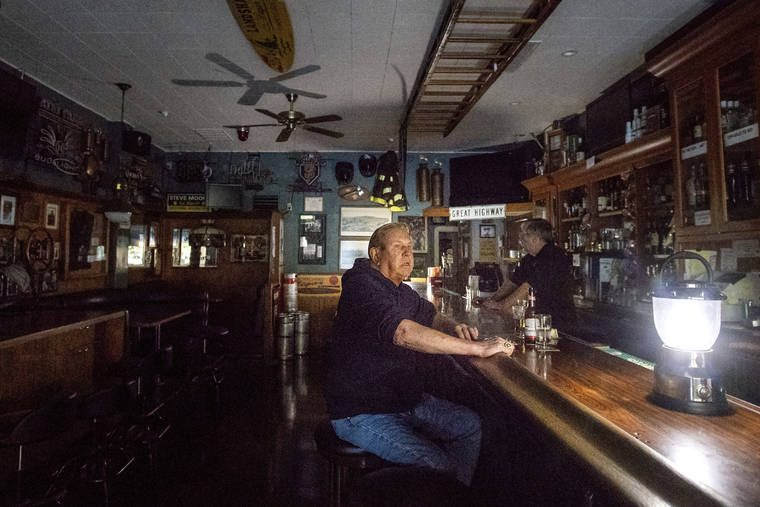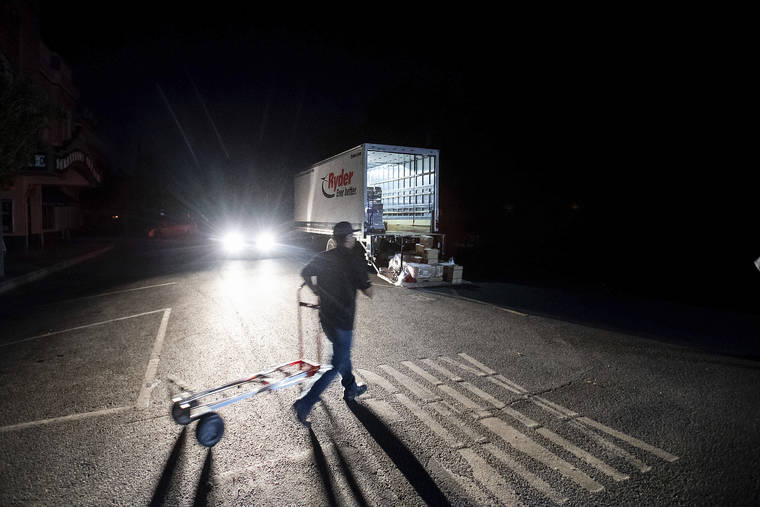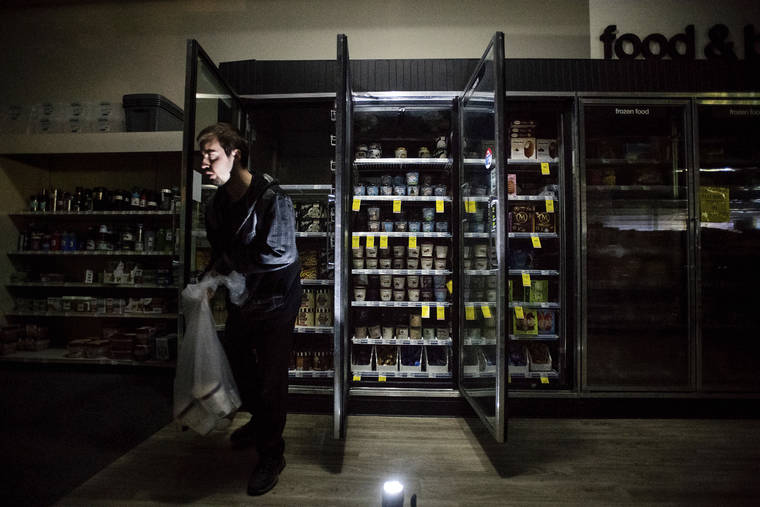Power outages begin in California amid hot, windy weather




SAN FRANCISCO Californias biggest utility shut off electricity to more than a million people Wednesday for what could be days on end, in the most sweeping effort in state history to prevent wildfires caused by windblown power lines.
SAN FRANCISCO — California’s biggest utility shut off electricity to more than a million people Wednesday for what could be days on end, in the most sweeping effort in state history to prevent wildfires caused by windblown power lines.
The move came after two years of catastrophic fires sent Pacific Gas & Electric into bankruptcy and forced it to take more aggressive steps to prevent blazes.
The utility said it cut power to more than 500,000 customers in Northern California and that it planned to gradually turn off electricity to nearly 800,000 customers to prevent its equipment from starting wildfires during windy weather. A second group of about 234,000 customers was to lose power starting at noon, the utility said, followed by a third group the utility was still deciding on. The power outages were expected to affect about 2 million people.
Deliberate outages like these could become the new normal in an era in which scientists say climate change is leading to fiercer blazes and longer fire seasons.
The utility planned to shut off power in parts of 34 northern, central and coastal California counties to reduce the chance of fierce winds knocking down or toppling trees into power lines during a siege of dry, gusty weather.
Gusts of 35 mph to 45 mph (56-72 kph) were forecast to sweep a vast swath of the state, from the San Francisco Bay Area to the agricultural Central Valley and especially in the Sierra Nevada foothills, where a November wildfire blamed on PG&E transmission lines killed 85 people and virtually incinerated the town of Paradise.
The California Department of Forestry and Fire Prevention said it increased staffing in preparation for extreme fire weather.
The winds will be the strongest and most widespread the region has seen in two years, and given the scope of the danger, there was no other choice but to stage the largest preventive blackout in state history, PG&E said.
“This is a last resort,” said Sumeet Singh, head of the utility’s Community Wildfire Safety Program.
But the utility faced criticism from residents who noted that it was not noticeably windy on Wednesday.
Michael Wara, a research fellow on energy policy at Stanford University who lives in Mill Valley, north of San Francisco, said his home lost power at 2 a.m. Wednesday even though there was no wind in the area.
Wara said a forecast Tuesday night showed winds in Mt. Tamalpais, a nearby mountain, were less than 10 mph (16 kph).
“There is zero wind where I live,” Wara said. “PG&E is required to shut down based on observed conditions, not forecast conditions.”
Gov. Gavin Newsom said people should be outraged by PG&E’s move.
“No one is satisfied with this, no one is happy with this,” he said Tuesday.
The utility needs to upgrade and fix its equipment so massive outages are not the norm going forward, he said.
PG&E had warned of the possibility of a widespread shut-off Monday, prompting residents to flock to stores for supplies as they prepared for dying cellphone batteries, automatic garage doors that won’t work and lukewarm refrigerators.
The news came as residents in the region’s wine country north of San Francisco marked the two-year anniversary of deadly wildfires that killed 44 and destroyed thousands of homes. San Francisco is the only county in the nine-county Bay Area where power will not be affected.
Residents of the Sonoma County city of Cloverdale, population 9,300, were preparing for the possibility of zero power and downed internet and cellphone lines, which happened during a series of wine country fires that killed 45 people in 2017. Cloverdale homes were not burned then, but residents were worried sick over family in burn zones and in the dark without communications, Mayor Melanie Bagby said.
She accused PG&E of failing to upgrade its equipment.
“It’s inexcusable that we’re in the situation that we’re in,” she said. “We pay our bills, and we gave PG&E a monopoly to guarantee we would have” reliable power.
But Santa Rosa Mayor Tom Schwedhelm said he was grateful PG&E was taking proactive action. His city lost 5% of its housing during a 2017 fire that killed 22 and torched nearly 6,000 structures in Sonoma and Napa counties. State investigators determined the fire was sparked by a private electrical system, and was not the fault of PG&E.
It could take as many as five days to restore power after the danger has passed because every inch of power line must be checked to make sure it isn’t damaged or in danger of sparking a blaze, PG&E said.
To the south, Southern California Edison said more than 106,000 of its customers in parts of eight counties could face power cuts as early as Thursday as Santa Ana winds loomed.
The cutbacks followed a plan instituted after deadly wildfires — some blamed on downed PG&E transmission lines — destroyed dozens of lives and thousands of homes in recent years and forced the utility into bankruptcy over an estimated $30 billion in potential damages from lawsuits.
The outages Wednesday weren’t limited to fire-prone areas because the utilities must turn off entire distribution and transmission lines to much wider areas to minimize the risk of wildfires.
Classes were canceled for thousands of schoolchildren and at the University of California, Berkeley, Sonoma State University and Mills College.
Hospitals would operate on backup power, but other systems could see their generators fail after a few days. Outages even posed a threat that fire hydrants wouldn’t work at a time of extreme fire danger.
Counties activated their emergency centers and authorities urged people to have supplies of water for several days, to keep sensitive medicines such as insulin in cool places, to drive carefully because traffic lights could be out, to have a full gas tank for emergencies and to check the food in freezers and refrigerators for spoilage after power is restored.
PG&E set up about 30 community centers offering air conditioning, restrooms, bottled water and electronic charging stations during daylight hours.
Oakland Mayor Libby Schaaf asked residents Tuesday not to clog 911 lines with nonemergencies and urged people to be prepared. The city canceled all police officers’ days off in preparation for the outages.
PG&E said it was informing customers by text and email about where and when the power would be cut. But its website, where it directed people to check whether their addresses would be affected, was not working most of the day Tuesday after being overloaded with visitors.


